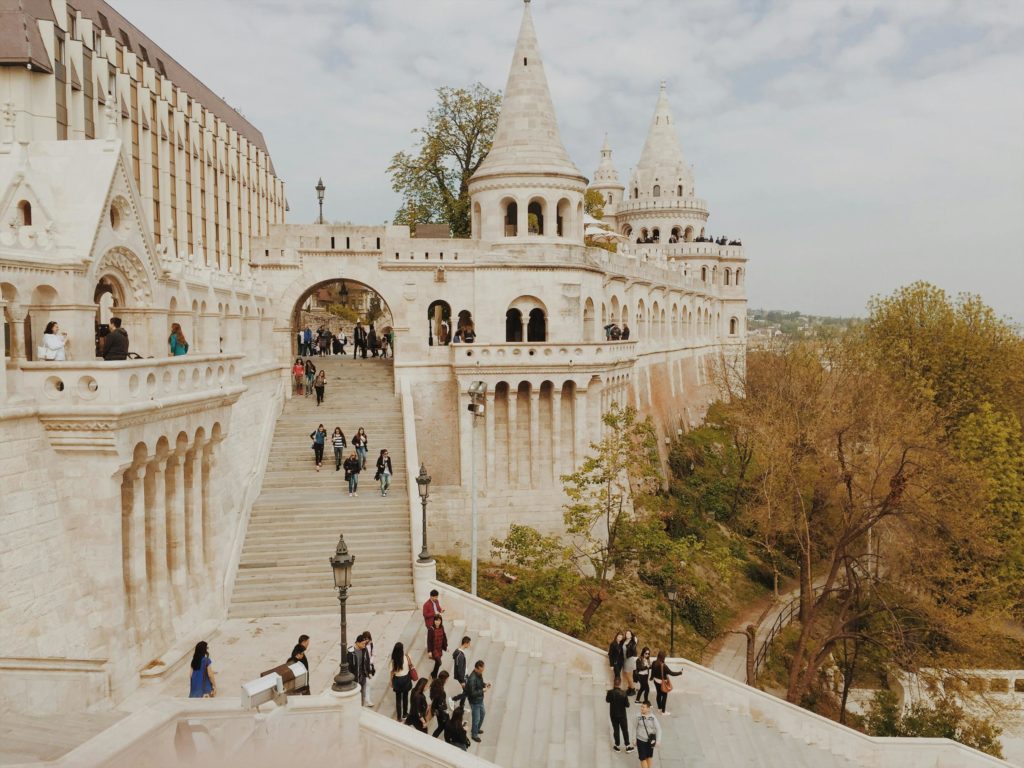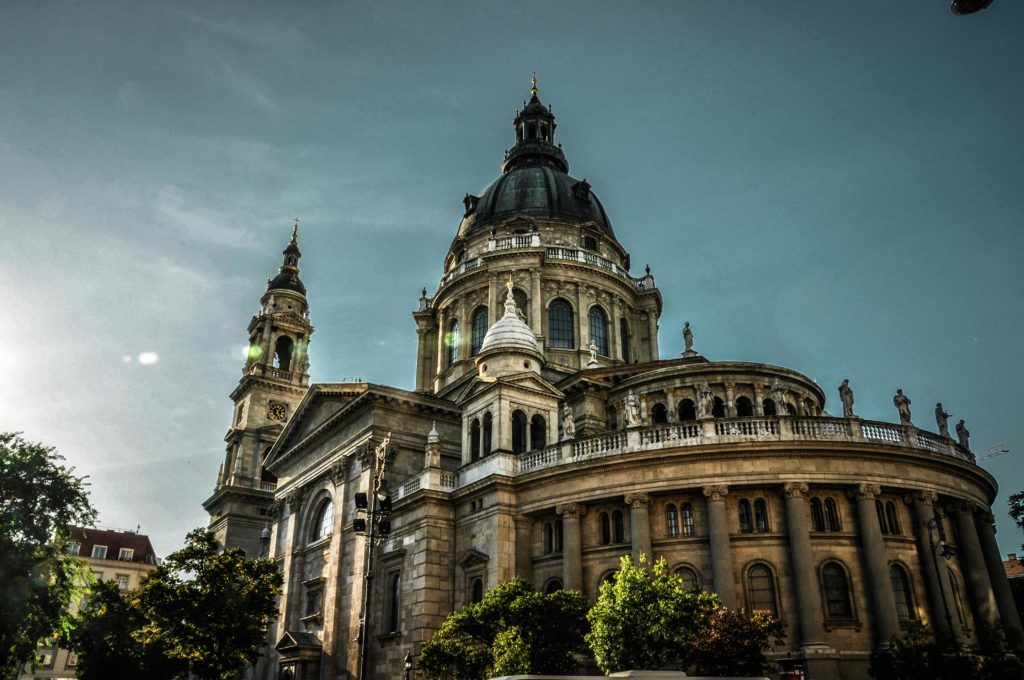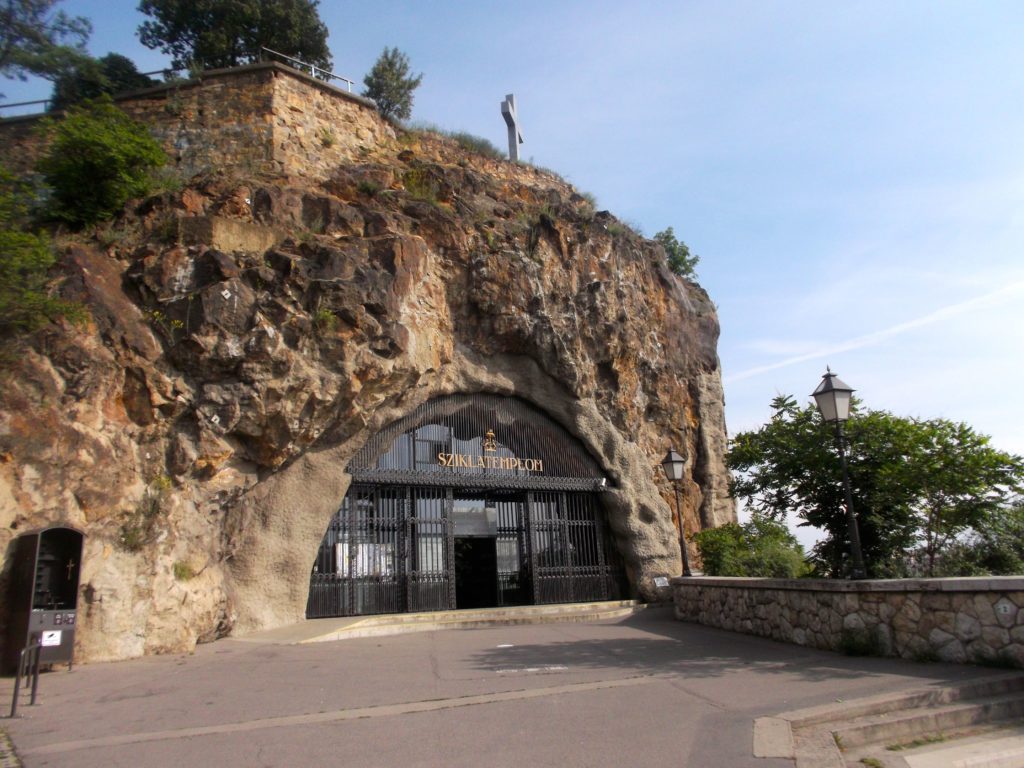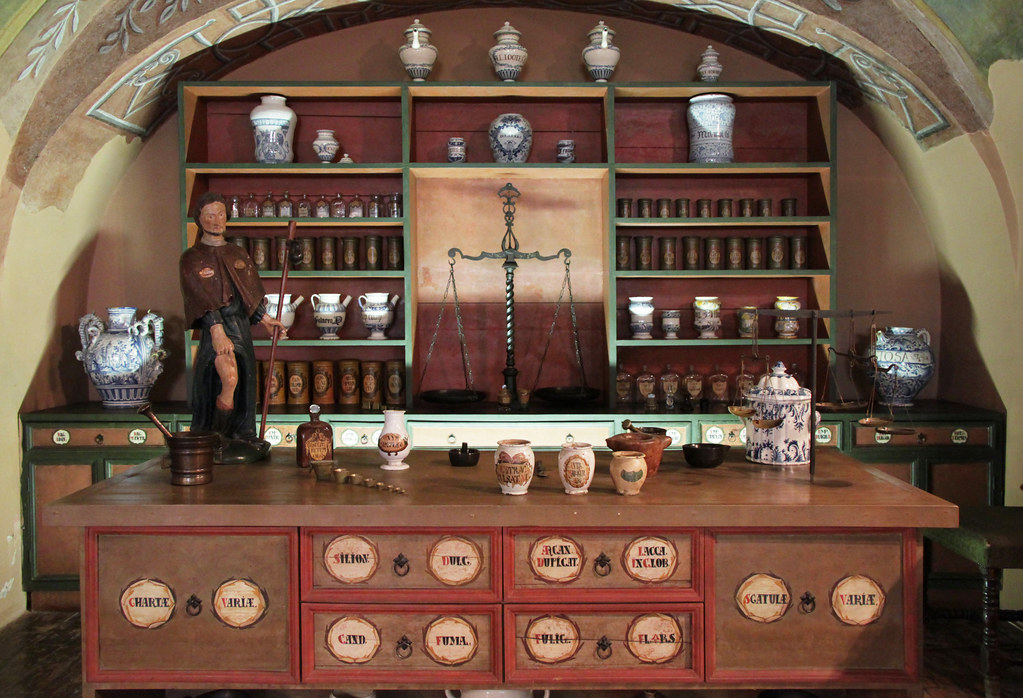Budapest, a city majestically split by the Danube River, boasts two iconic landmarks perched atop Buda Hill: the enchanting Fisherman’s Bastion and the historic Buda Castle District. Together, they form a captivating open-air museum, offering breathtaking panoramas, architectural wonders, and a glimpse into Hungary’s rich past.
Fisherman’s Bastion: A Fairytale Panorama

The Fisherman’s Bastion isn’t your typical castle. Built in the late 19th century, it resembles a whimsical fairytale scene with its seven turrets, neo-Romanesque architecture, and enchanting lookout terraces. Each turret represents one of the seven Magyar tribes who founded Hungary in 895 AD. Ascend the winding staircases and walkways, and be rewarded with unparalleled vistas of the Danube, the Buda Castle District, and the sprawling cityscape of Pest beyond.
Buda Castle District: A Journey Through Time

The Buda Castle District, a UNESCO World Heritage Site, is a labyrinth of cobbled streets, historical landmarks, and architectural gems. Explore the Buda Castle itself, a sprawling complex that has served as a royal residence, a government seat, and now houses museums, including the Hungarian National Gallery.
Beyond the Bastions: A Treasure Trove of Attractions
The Buda Castle District offers a plethora of attractions beyond the main castle walls:
Matthias Church

Located in the heart of the Buda Castle District, Matthias Church, also known as The Church of the Assumption of the Buda Castle, is one of Budapest’s most iconic landmarks. This stunning Roman Catholic church features an intricate Gothic exterior, characterized by its ornate spires and vibrant roof tiles, which create a dazzling mosaic effect. Inside, the Neo-Gothic interior is equally breathtaking, adorned with intricate frescoes and stained glass windows that narrate biblical stories and historical events. Visitors can also climb the Matthias Church Tower for panoramic views of Budapest, offering an unparalleled perspective of the city’s skyline and the Danube River. Regular concerts and events held in the church add to its cultural significance, making it a must-visit for both history enthusiasts and art lovers.
St. Stephen’s Basilica

Though not situated directly within the Castle District, St. Stephen’s Basilica is close enough to warrant a visit while exploring the area. This magnificent neoclassical landmark is one of Budapest’s most important religious buildings, named after the first king of Hungary, St. Stephen. The basilica’s grandeur is evident in its stunning façade and immense dome, which dominates the city’s skyline. Visitors can ascend to the top of the dome, either by elevator or via a series of staircases, to enjoy breathtaking views of Budapest. Inside, the basilica houses the mummified right hand of St. Stephen, an important relic for the Hungarian people. The interior is richly decorated with marble, gold leaf, and intricate mosaics, making it a feast for the eyes and a place of deep spiritual significance.
Hungarian National Archives

The Hungarian National Archives, housed in a grand neo-Renaissance palace, is a treasure trove of Hungarian history. Located within the Castle District, this institution preserves a vast collection of historical documents, maps, and artifacts that date back centuries. The building itself is an architectural marvel, with its stately façade and elegant interiors. Visitors can explore exhibitions that delve into various aspects of Hungary’s past, from medieval times to the modern era. The archives also host temporary exhibitions and educational programs, making it an enriching experience for anyone interested in understanding the historical context and heritage of Hungary.
Labyrinth & Buda Castle Cave

Beneath the majestic Buda Castle lies a network of caves and tunnels known as the Labyrinth and Buda Castle Cave. These subterranean passages have a rich history, having served various purposes over the centuries, including as wine cellars, bomb shelters, and even a medieval prison. Today, they offer a fascinating glimpse into the hidden depths of the city. The labyrinth features eerie, atmospheric lighting and exhibits that highlight different periods of the castle’s history. Guided tours take visitors through these ancient tunnels, revealing secrets and stories from the past. The cool, damp environment adds to the sense of mystery and adventure, making it a unique and intriguing part of the Castle District experience.
House of Terror

The House of Terror museum, though not within the Castle District itself, is an essential visit for understanding Hungary’s complex and often tragic 20th-century history. Located on Andrássy Avenue, this museum occupies the former headquarters of both the Nazi and Communist secret police. Through a series of powerful exhibits, it sheds light on the oppressive regimes that ruled Hungary during World War II and the subsequent Soviet occupation. The museum’s displays include photographs, personal testimonies, and artifacts that poignantly convey the experiences of those who suffered under these regimes. Interactive exhibits and recreated interrogation rooms provide a sobering reminder of the past, making the House of Terror a profound educational experience for visitors.
Golden Eagle Pharmacy Museum

Step back in time at the Golden Eagle Pharmacy Museum, the oldest pharmacy in Hungary, dating back to the 18th century. Located within the Buda Castle District, this charming museum offers a fascinating look at the history of medicine and pharmaceutical practices. The museum is housed in an exquisitely preserved building, with original furnishings and apothecary jars that transport visitors to a bygone era. Exhibits showcase a wide range of historical medical instruments, remedies, and pharmaceutical artifacts, providing a unique insight into the evolution of healthcare. The Golden Eagle Pharmacy Museum is a hidden gem that combines history and science, making it a must-visit for anyone intrigued by the medical field and the rich heritage of Budapest.
Ruszwurm Confectionery

Indulge your sweet tooth at Ruszwurm Confectionery, a historic cafe that has been a beloved spot for Hungarian writers and artists since 1827. Nestled within the Buda Castle District, this charming establishment exudes old-world charm with its traditional decor and cozy atmosphere. Known for its mouthwatering pastries and cakes, Ruszwurm offers a delightful array of Hungarian confectioneries, from cream-filled krémes to the iconic Dobos torte. The cafe’s rich history and delectable treats make it a perfect stop for those looking to experience a taste of Budapest’s culinary heritage. Whether you’re savoring a slice of cake with a cup of coffee or simply soaking in the ambiance, Ruszwurm Confectionery provides a sweet escape from the bustling city.
All the previous sites offer a rich tapestry of historical, cultural, and architectural wonders, making the Budapest Castle District and its surroundings a fascinating destination for any traveler.
Planning Your Visit
The Fisherman’s Bastion offers free entry to the terraces, while a fee applies to access the upper turrets. Combination tickets are available for many Castle District attractions. The area is best explored on foot, allowing you to wander the charming streets and soak in the historical ambiance. Wear comfortable shoes, as there’s plenty of exploring to do.
A Fairytale Awaits
A visit to Fisherman’s Bastion and the Buda Castle District is a must for any Budapest itinerary. It’s a place where history whispers from the cobblestones, breathtaking views leave you speechless, and architectural wonders capture your imagination. So, come explore this enchanting corner of Budapest and step into a world of fairytales and bygone eras!


Comments are closed.